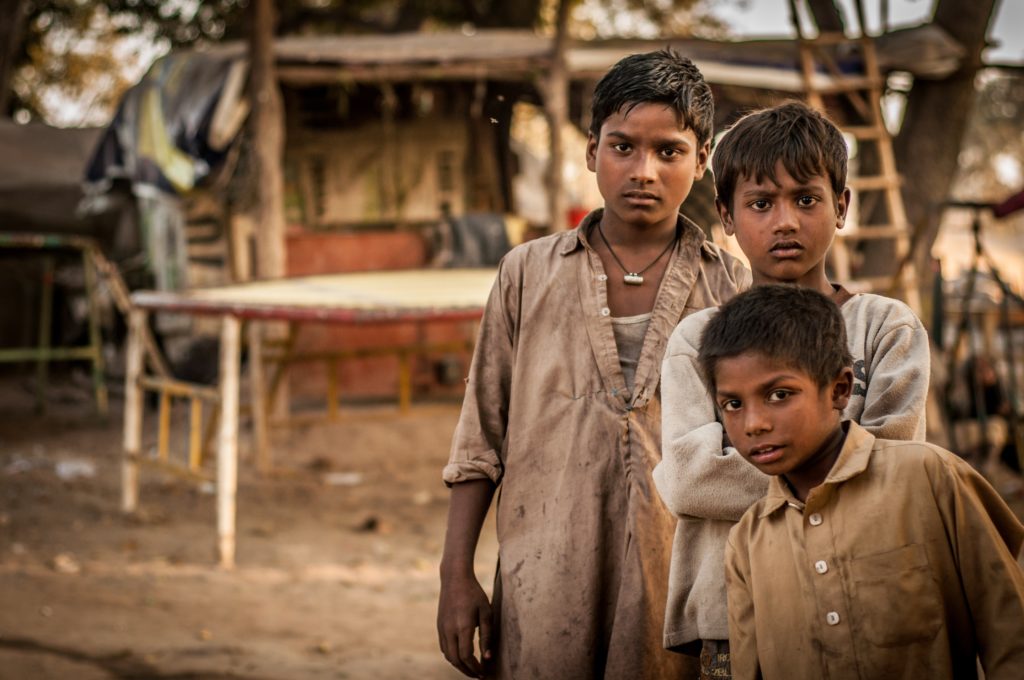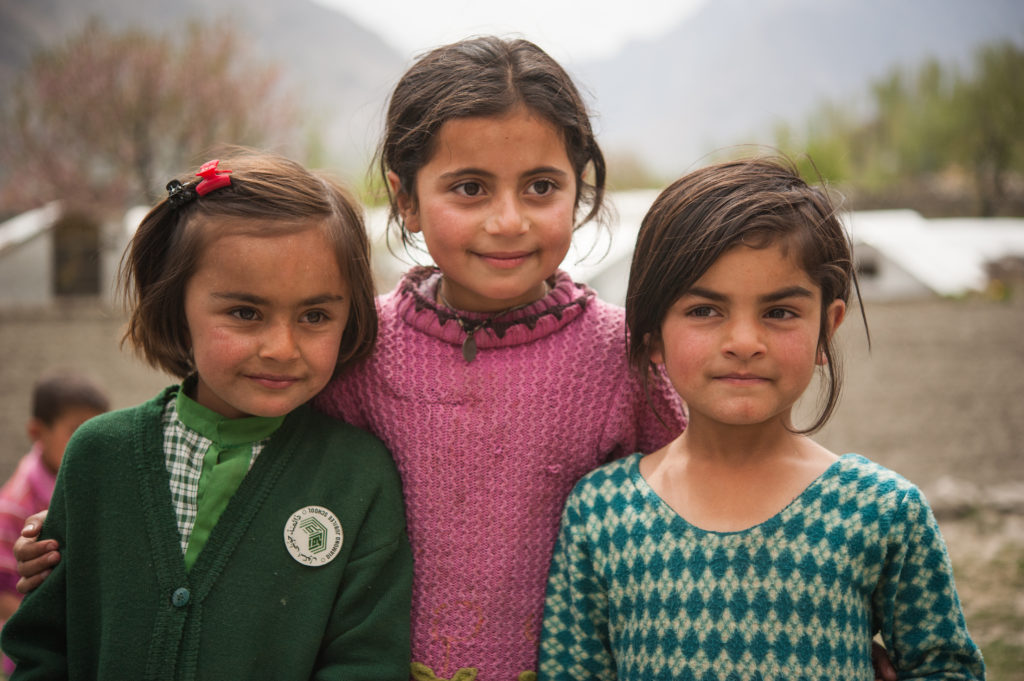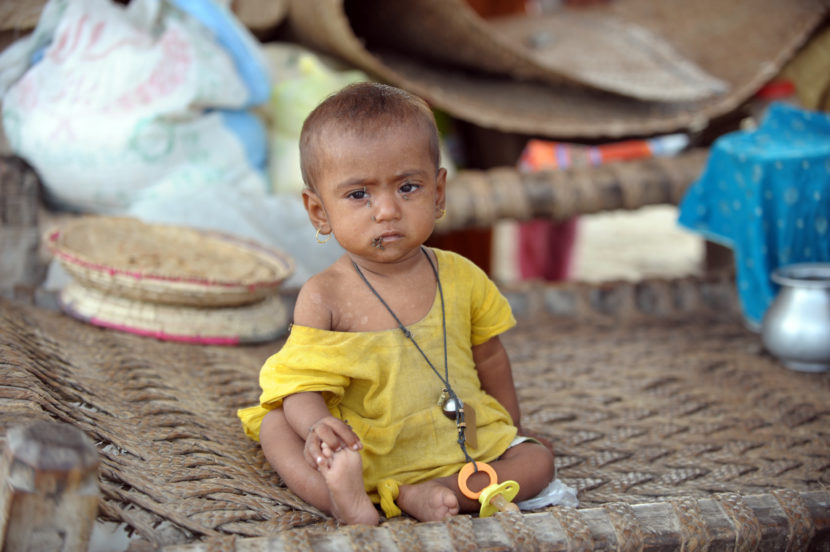Malnutrition is a critical issue in Pakistan, especially among children (ANII, 2024). Recent reports highlight the highest documented rates of malnutrition to ever be recorded in the country. The situation is a complex crisis, with several factors contributing to malnutrition.
Malnutrition among children globally
According to the World Health Organization, malnutrition is defined as deficiencies, excesses or imbalances in a person’s intake of energy and/or nutrients (WHO, 2024). Malnutrition encompasses undernutrition, which is manifested by high rates of stunting, wasting, and underweight among children.
Malnutrition affects children worldwide. An international survey conducted in 2022 estimated 149 million children under the age of 5 around to be stunted (too short for age), 45 million were estimated to be wasted (too thin for height), and 37 million were overweight or living with obesity. Nearly half of the deaths among children under the age of five are linked to undernutrition.
Pakistan has the third-highest proportion of stunted children globally. (Ahmed, 2023). A 2018-2022 UNICEF report points out that 38% of children in Pakistan are suffering from stunting otherwise known as chronic malnutrition (UNICEF, 2019).
Causes of malnutrition in Pakistan

In Pakistan, the rates of malnutrition are highest in rural and impoverished areas, especially in provinces like Sindh, Balochistan, and Khyber Pakhtunkhwa. In Sindh alone, over 50% of children are stunted highlighting long-term nutritional deficiencies.
Factors such as food insecurity, poor sanitation and a lack of healthcare, contribute to the high percentage of malnourished children in Pakistan. Many households face food shortages and cannot afford a balanced diet. These households often have contaminated water sources and inadequate sanitation which can contribute to infections that worsen malnutrition. The limited access to or lack thereof healthcare exacerbates these malnutrition rates.
Pakistan’s economy is also contributing to the increase in malnutrition among children. The ongoing economic crisis, inflation, and poverty have worsened access to food and affordability, leading to nutritional deficiencies in children. Rising prices of staple foods and unemployment have forced families to cut back on nutritious food, relying instead on cheaper, less nutritious options.
Maternal nutrition’s role in preventing child malnutrition
Another major factor contributing to child malnutrition in Pakistan is the lack of maternal nutrition (Irfan, 2024). Maternal nutrition is defined as the nutritional needs of women before pregnancy, during pregnancy, and during the postpartum period. Proper maternal nutrition is vital to prevent stunting and wasting among children (UNICEF & Government of Pakistan, 2022).
Children of malnourished women are more likely to face cognitive impairments, short stature, lower resistance to infections, and a higher risk of disease and death throughout their lives. There are multiple micronutrient deficiencies prevalent in Pakistan. Approximately one in three mothers are malnourished, and around half of those mothers have anemia in the country.
The impact of climate change on food security in Pakistan
Climate change is another factor that impacts malnutrition rates (Agosti, 2023). Climate change’s effect on agriculture and ecosystems puts pressure on food production and nutrition security. Increases in temperature and flooding lead to declines in crop yields, livestock, and agroforestry, consequently impacting food quantity, quality, diversity, nutrient density, safety, and affordability (Vermeulen, 2012).
Climate change disasters in Pakistan exacerbate nutrient deficiencies and chronic undernutrition among children. For example, in the aftermath of the August 2022 floods that submerged one-third of Pakistan, health facilities reported alarming levels of severe acute malnutrition among children in affected areas (UNICEF, 2022). Over 15 million children were affected by the floods that destroyed 9.4 million acres of crops, and more than 1.1 million farm animals (Toole, 2023) The year following the floods, the rate of child malnutrition increased by 50%.
Long-term impacts of malnutrition in children
Childhood undernutrition exerts short-term effects on both illness and mortality in addition to having serious long-term health implications (Agostoni, 2023). From pregnancy through the first few years of their lives, malnutrition can lead to some serious cognitive consequences on the development of a child’s brain.
Malnutrition can result in a reduction in brain size and changes in brain structure, which can affect learning, memory, and processing speed. These long-term impacts influence educational performance, literacy level and numeracy skills.
Malnutrition further compromises immune functioning, making children more susceptible to infections and diseases such as diarrhea, pneumonia, and malaria. This vulnerability can persist and increase their risk of serious health problems throughout their lives.
For example, childhood malnutrition can lead to a higher risk of developing chronic diseases in adulthood, such as heart disease, diabetes, and high blood pressure. Malnutrition can also contribute to higher rates of mental health issues including anxiety, depression, and behavioral problems.
These long-term health implications stemming from childhood malnutrition lead to higher healthcare needs and associated costs, which can strain family resources and public healthcare systems. The impaired physical and cognitive potential associated with childhood malnutrition also contributes to a lifetime of reduced productivity, job opportunities, and earning power. This translates into substantial economic losses and reinforces the cycles of poverty.
Government interventions and solutions
The government of Pakistan, alongside international organizations, has initiated several nutrition programs (UNICEF & Government of Pakistan, 2022). Nutrition-specific interventions and social protection schemes have been shown to help address both mother and child malnutrition.
While these efforts are combating the rising rates of malnutrition, their implementation remains inconsistent, and coverage is often inadequate in rural areas. Despite ongoing efforts, the malnutrition crisis in Pakistan continues to persist and requires sustained interventions focusing on food security, healthcare, and poverty alleviation.
Further action needed
Government actions focused on malnutrition in Pakistan must address the multiple factors contributing to the crisis (UNICEF & Government of Pakistan, 2022). These actions should include promoting healthy growth in early life and sustainable, culturally appropriate diets throughout the children’s and parents’ lives (Agostoni, 2023).
It is especially important for actions to assist mothers. These strategies could include increasing funding for breastfeeding and nutrient-dense diets for both mothers and children, setting up and improving dedicated maternity facilities to assist women in rural areas, enacting better family leave policies and strengthening community networks.
Government action should also focus on climate mitigation measures in agriculture and livestock production, to promote food and nutrition security. The government can draw on conservation strategies in agriculture, agroforestry, and agroecology to reverse the degradation caused by conventional farming and increase crop diversity.
Securing health and future potential for children in Pakistan
The short- and long-term effects of childhood malnutrition critically impact children’s wellbeing. The malnutrition crisis in Pakistan is multifaceted, affecting individual health and potential in addition to societal productivity and economic stability. Addressing it early with proper nutrition, health education, and support systems is crucial for breaking the cycle and ensuring healthier, more productive futures for Pakistani children.

Humanium is working hard to promote children’s right to nutrition and health around the world. Humanium’s methodology was developed by human rights advocates and focuses on protecting and supporting children, empowering them to achieve their goals within their local communities. Join Humanium in youth advocacy – by donating, volunteering or becoming a member.
Written by Kathleen Tereposky
Bibliography:
Agostoni, C. et al. (January 13, 2023). Interlinkages between Climate Change and Food Systems: The Impact on Child Malnutrition-Narrative Review. . Retrieved from the National Library of Medicine at https://pmc.ncbi.nlm.nih.gov/articles/PMC9865989/, accessed on October 15, 2024.
Ahmed, N. et al. (September 20, 2023). Treatment Outcomes of Severe Acute Malnutrition and Its Determinants Among Paediatric Patients in Quetta City, Pakistan. Retrieved from the National Library of Medicine at https://www.ncbi.nlm.nih.gov/pmc/articles/PMC10518357/#:~:text=Shifting%20our%20concern%20to%20SAM,deaths%20per%201000%20live%20births.&text=Pakistan%20has%20the%20third%2Dhighest,globally%2C%20behind%20Nigeria%20and%20India, accessed on October 5, 2024.
ANI News. (August 16, 2024). Pakistan is facing malnutrition crisis, new report reveals. Retrieved from ANI News at https://www.aninews.in/news/world/asia/pakistan-is-facing-malnutrition-crisis-new-report-reveals20240816223147/, accessed on October 5, 2024.
Brazier, AKM, et al. (November 6, 2020). Micronutrient Status and Dietary Diversity of Women of Reproductive Age in Rural Pakistan. Retrieved from the National Library of Medicine at https://www.ncbi.nlm.nih.gov/pmc/articles/PMC7694683/, accessed on October 5, 2024.
Irfan, W. (2024). Malnourished mothers, starving babies: How ‘hidden hunger’ is endangering Pakistan’s future generations. Retrieved from DAWN at https://www.dawn.com/news/1821416, accessed on October 5, 2024.
Toole, M. (November 21, 2023). A year after Pakistan’s floods, 44% of children have stunted growth. What can be done about it? Retrieved from The Conversation at https://theconversation.com/a-year-after-pakistans-floods-44-of-children-have-stunted-growth-what-can-be-done-about-it-218123, accessed on October 15, 2024.
UNICEF & Government of Pakistan. (2022). Pakistan Maternal Nutrition Strategy 2022-27. Retrieved from UNICEF at https://www.unicef.org/pakistan/reports/pakistan-maternal-nutrition-strategy-2022-27, accessed on October 5, 2024.
UNICEF. (2019). Every Child Survives and Thrives – Nutrition. Retrieved from UNICEF at https://www.unicef.org/pakistan/media/1771/file/Every%20Child%20Survives%20and%20Thrives%20-%20Nutrition.pdf, accessed on October 5, 2024.
UNICEF. (October 21, 2022). More than 1 in 9 children in flood-affected areas of Pakistan suffering from severe acute malnutrition. Retrieved from UNICEF at https://www.unicef.org/press-releases/more-1-9-children-flood-affected-areas-pakistan-suffering-severe-acute-malnutrition, accessed on October 15, 2024.
Vermeulen, S.J. et al. (2012). Climate Change and Food Systems. Retrieved from Annual Review of Environment and Resources at https://www.annualreviews.org/content/journals/10.1146/annurev-environ-020411-130608#abstract_content, accessed on October 15, 2024.
World Health Organization (“WHO”). (March 1, 2024). Malnutrition. Retrieved from the World Health Organization at https://www.who.int/news-room/fact-sheets/detail/malnutrition/, accessed on October 29, 2024.


